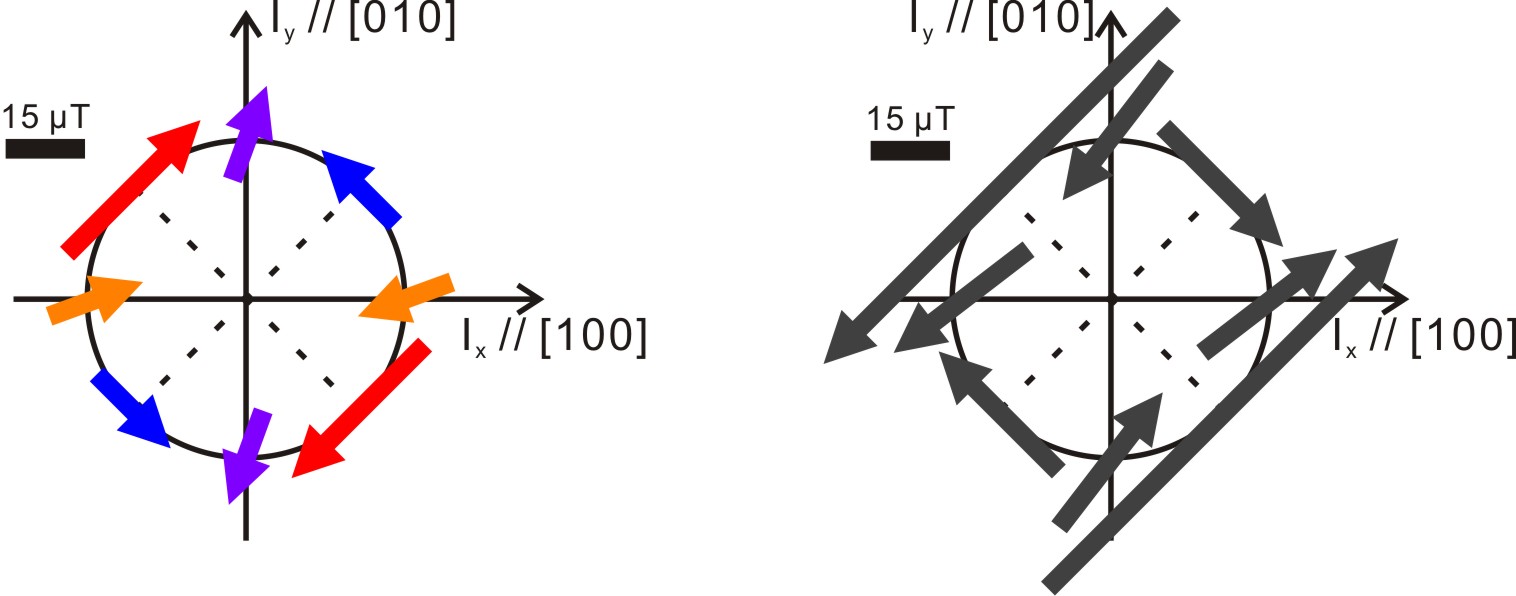The field of spin electronics or "spintronics" aims to understand how one can make use of the spin degree of freedom of electrons in order to realize electronic devices and functionalities which cannot be realized by making use of the electron's charge degree of freedom alone. Our research activities are focussed on studying novel spintronic effects in small, magnetic as well as non-magnetic semiconductor nanostructures. Most of our spintronics research is done in collaboration with Hitachi Cambridge Laboratory
Spin-orbit driven FMR
Ferromagnetic resonance is a common technique for characterising ferromagnets (FM’s). Currents in materials with an inversion asymmetry can induce effective magnetic fields as a result of the spin-orbit interaction and the spin Hall effect. We demonstrate the excitation of resonance by using the current induced fields (Fang, Nature Nano., 2011).
Spin orbit FMR measurement configuration (left) and typical data showing the resonance decomposed into symmetric and antisymmetric Lorentzians.
An alternating microwave current induces an oscillating torque, causing the magnetisation to precess around an external field. Because of spin-dependent scattering, resistance depends on magnetisation direction. At resonance, the resistance of the sample oscillates, rectifying to produce a DC voltage. As the external magnetic field is swept, the DC voltage is measured as a combination of symmetric and anti-symmetric Lorentzians. From the angular dependence of the DC voltage, we can determine the symmetry and magnitude of the effective fields. (Kurebayashi, Nature Nano., 2014)

Strength and direction of the effective driving fields in GaMnAs (left) and GaMnAsP respectively (right). The change in direction is due to the sign change of the materials's strain from compressive to tensile.
Spin Hall Effect
We have demonstrated a novel two-dimensional (2D) spin-LED, and are able to detect the intrinsically generated spin-polarization in low-dimensional nonmagnetic charge carrier system. In particular, we made the first observation of a new member of the Hall family - the spin-Hall effect (SHE) (Wunderlich, PRL, 2005). This refers to the generation of a pure spin current in a paramagnetic semiconductor, transverse to an applied electric field even in the absence of an applied magnetic field. Using related electronic devices we observed the modification of optically injected electron spins by the internal spin-orbit fields present within a two-dimensional electron gas (2-deg) (Wunderlich, Nature Physics, 2009). And most recently external gates have been used to tune the strength of the spin-orbit interaction in the 2-deg allowing control over the injected electron spins. This experimentally demonstrates transistor functionality in a spintronic device (Wunderlich, Science, 2010).

Spin injection Hall effect device (left) and theoretical calculation of the precessing spin-polarization (right).


